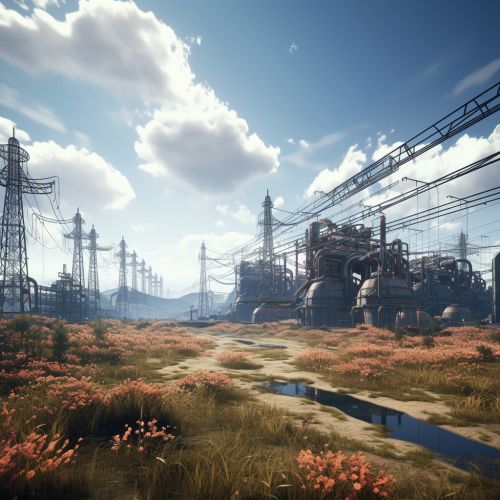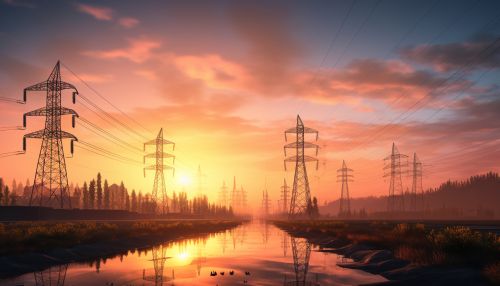Power Grid
Overview
A power grid is a complex system that connects various power sources to consumers through transmission and distribution lines. It is a crucial part of the infrastructure that supports modern society, providing reliable electricity to homes, businesses, and industries. The power grid is composed of generating stations that produce electricity, high-voltage transmission lines that carry power from distant sources to demand centers, and distribution lines that connect individual customers.


History
The concept of a power grid dates back to the late 19th century, when inventors like Thomas Edison and Nikola Tesla were developing the first practical methods for generating and distributing electricity. The first power grids were local systems that supplied electricity to nearby homes and businesses. Over time, these local grids were interconnected to form larger, more reliable networks, leading to the development of the modern power grid.
Structure
The power grid can be broadly divided into three main components: generation, transmission, and distribution.
Generation
Electricity generation is the process of converting primary energy sources, such as coal, natural gas, nuclear power, or renewable resources, into electrical power. The electricity is then stepped up to a high voltage for transmission over long distances.
Transmission
The transmission system carries electricity from the generating stations to the distribution substations. This is done through a network of high-voltage transmission lines, which are designed to carry electricity over long distances with minimal loss of power.
Distribution
The distribution system carries electricity from the distribution substations to the end users. This involves stepping down the voltage to a safer level for household and commercial use.
Operation
The operation of a power grid involves a complex process of balancing supply and demand in real-time. This is achieved through the use of control centers, which monitor the grid's performance and make adjustments as necessary to maintain stability.
Challenges
Power grids face a number of challenges, including aging infrastructure, increasing demand for electricity, and the need to integrate renewable energy sources. These challenges require innovative solutions, such as smart grid technologies, to ensure the reliability and sustainability of the power grid.
Future
The future of the power grid lies in the development of smart grids, which use digital technology to manage electricity demand in a more efficient and reliable manner. This includes the use of advanced metering infrastructure, demand response programs, and grid automation technologies.
